We have many chickadee and wren nest boxes, a downy woodpecker box, and one (never-used) nuthatch nest box. After cleaning them with a weak bleach solution, we leave them out over the winter so they can be used for winter roosting. We’re not sure how many of them actually have been used this way, but we leave them out anyway.
This little wren is getting ready to leave the nest. In the past, they often selected the nest box right next to the driveway. They didn’t seem to mind people coming and going, although they did scold us if we stopped to watch too long.
Lately, though, they’ve been using the boxes in the back and front yards.
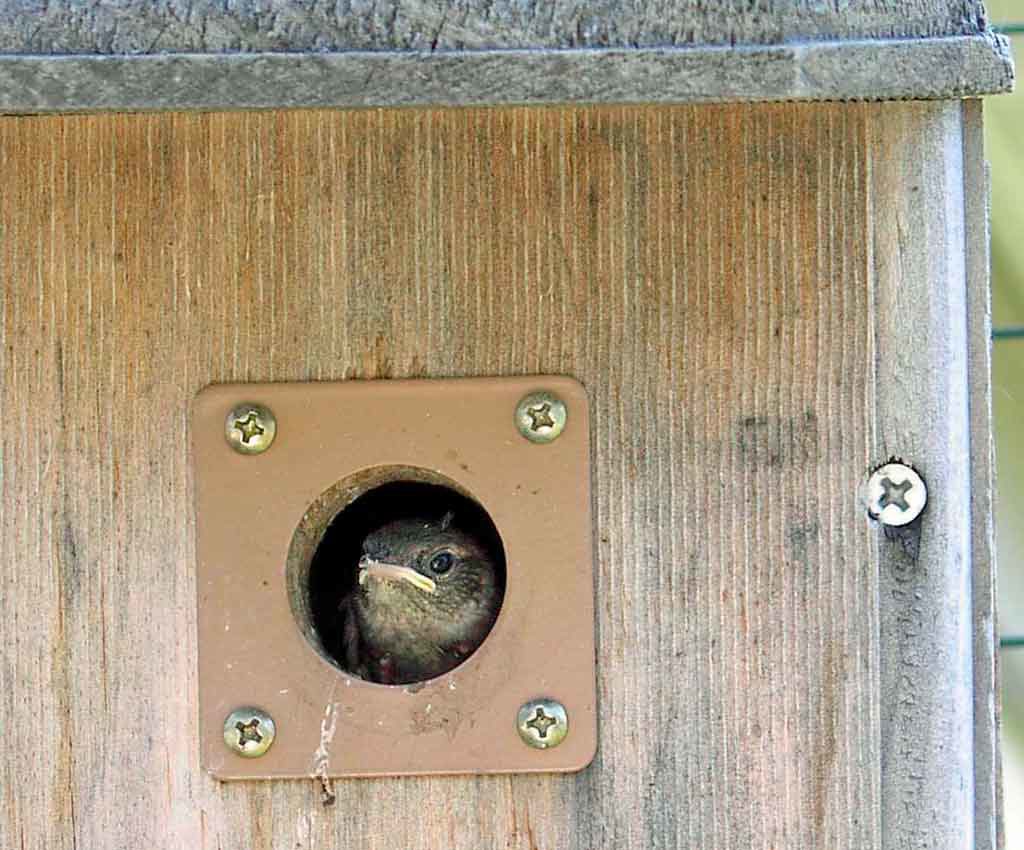
Bird-friendly, not aesthetics
We choose nest boxes based on bird-friendliness, not aesthetics. A good nest box, like the one above, will have no perch. It does, however, have ventilation — holes at the sides and at the bottom for moisture to drain. The side opens up easily for cleaning, and it’s the proper size hole for the target species.
We try to site and orient the nest boxes in the best place for the particular species the box was designed for. I check the Cornell Lab of Ornithology website to find out the proper height and orientation for the nest box. It’s a good idea to put some sort of predator guard on the post, although it’s not always possible depending on the location. This can make a big difference in whether they’re used and whether our tenants successfully raise their young.
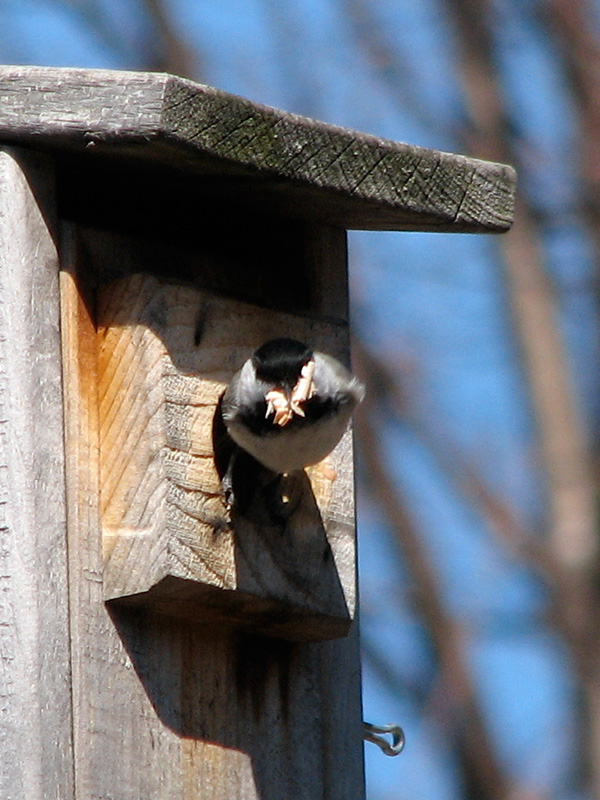
Another suggestion we followed was to add wood shavings to the nest box for some of those species, like chickadees, that are accustomed to hollowing out their own nest cavity. Removing the shavings is a part of this process. And they don’t just drop them out the hole. They fly them far enough away so that predators don’t know where the nest is. I feel bad to create so much extra (and to our human mind) unnecessary work, but this behavior is normal for chickadees.
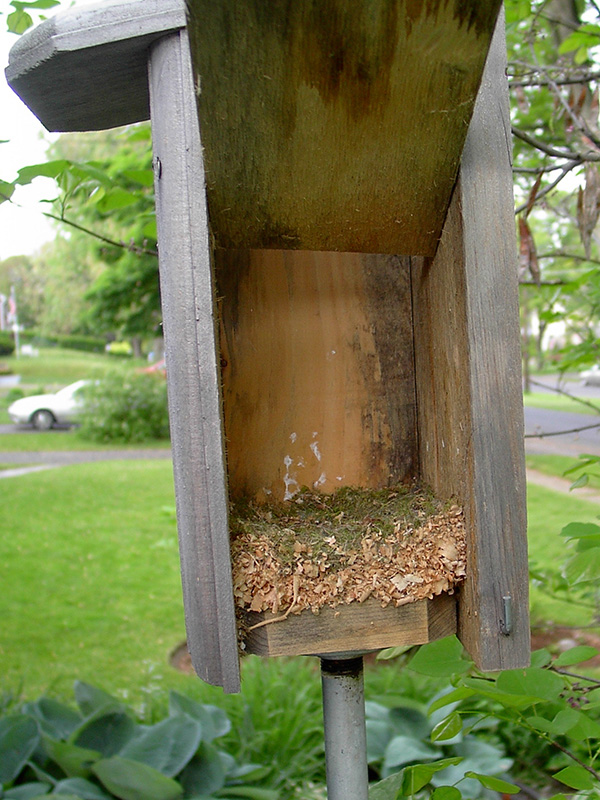
Not every nest is completed. For some reason, this one was abandoned. Perhaps they found a better nest site, perhaps another bird scared them away, or perhaps the bird met an untimely end.
This photo shows that they don’t remove all the shavings we added, and also shows some of the moss they used.
This photo also shows how easy it is to clean this particular model of nest box since the side opens right up. This design also makes it easy to monitor the nest if needed (though I’ve so far been too squeamish to do so).
This is the only ornamental nest box we have. It has ventilation and is very easy to clean — the top lifts right up once the top holder is unscrewed. It also has no perch.
But be cautious of most decorative bird houses.
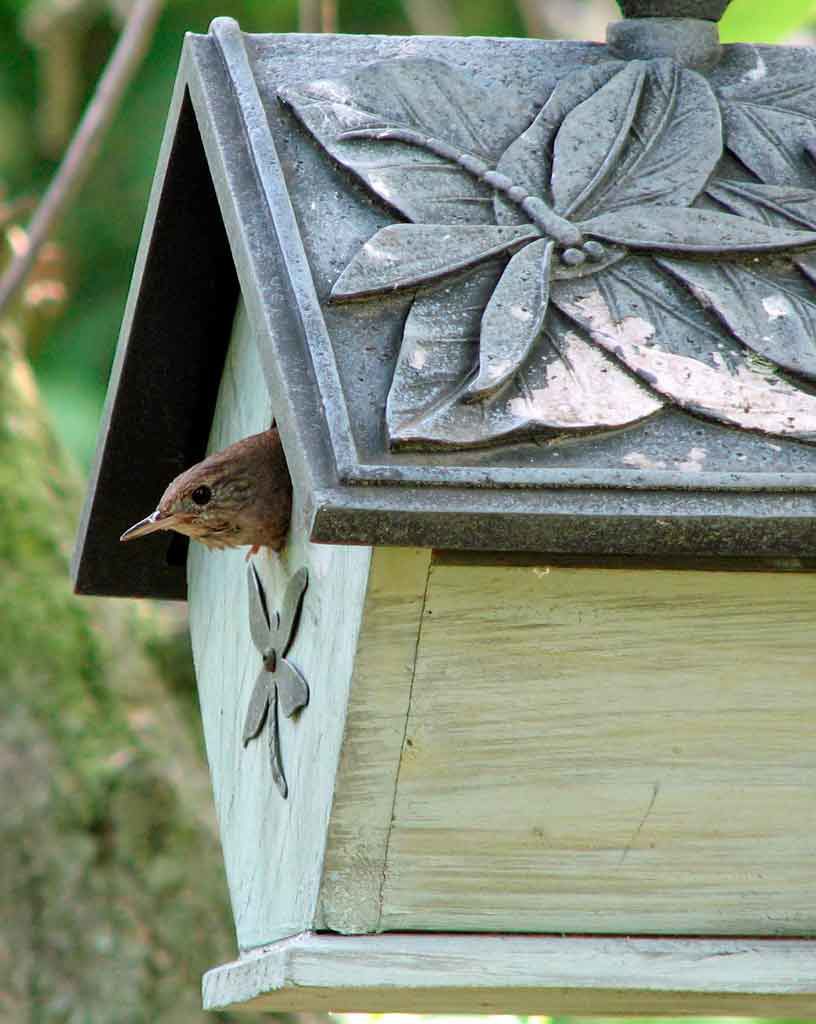
That’s the way it is …
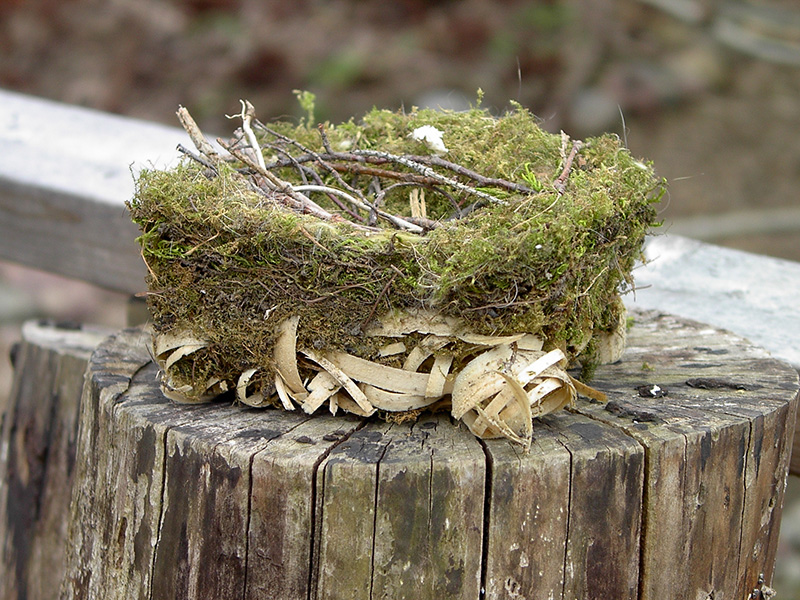
Here’s a chickadee nest I removed from the nest box at the end of the season, long after the chickadees had abandoned it, probably because of what I call “wren sticks.”
One frustration I’ve had is that house wrens take over so many of my chickadees’ nest boxes. The male wren returns before the female and builds rudimentary nests. When the female returns, he shows her his assortment of nests and she then selects one. The remaining nests go unused.
Unfortunately, this means that the chickadees’ hard work has gone to waste. I’ve learned to accept this as the natural course of events, but it’s always a little sad. (Reminder: Both birds are native to this area, and it’s illegal and unethical to interfere with this natural process!)
We put out a lot of chickadee / wren size boxes in an attempt to have enough left for chickadees once the wren has made all his demonstration nests.
But one of the best things we could provide for raising young is a dead tree so they could create their own nest cavity. Nest boxes are necessary only because our society has such an aversion to keeping dead trees.
Helping birds cope with unusual heat
From Cornell’s Lab of Ornithology: “Many places are experiencing higher-than-normal temperatures right now, and this leads to questions about how to help nesting birds endure the heat, particularly those in nest boxes. Here are our top six suggestions:
- maintain a birdbath nearby if there isn’t a close natural water source
- place nest boxes to receive afternoon shade
- paint nest boxes a light color
- use 1″ thick lumber for nest boxes (avoid thin pieces of wood)
- consider adding a heat shield to your nest box if you expect multiple days over 100°F”
Resources
- Cornell Lab of Ornithology:
- All about bird houses for various kinds of birds.
- Right Bird, Right House – an interactive tool customized by region and type of habitat
- Managing house sparrow and European starlings
- To clean or not to clean your nest box?
- The Nature Conservancy’s Cool Green Science:
- Maine Cooperative Extension:
- Bird Watcher’s General Store:
